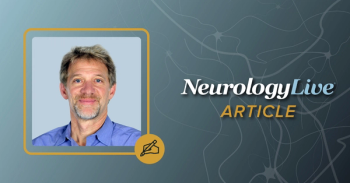
General Practitioners Accurately Prescreen Sleep Apnea via Sleep Symptom Checklist
Researchers found that sleep disorder-related symptoms were positively correlated with polysomnography indices.
The results of a recent study suggest that general practitioners can effectively prescreen patients for possible
The study found that people with OSA reported more symptoms on the SSC related to insomnia, daytime symptoms, sleep disorders, and psychological maladjustment than the control group did (P <.001). They also had significantly more severe sleep-related symptoms than the control group.
“Typically, individuals with OSA are identified through reported symptoms and overnight sleep studies,” first author Dorrie Rizzo, PhD, department of family medicine, McGill University, and colleagues wrote. The authors noted the difficulty of conducting such studies during the pandemic, especially given the possibility of further outbreaks or shutdown orders. As such, they sought to determine how patients can be identified for possible OSA while sleep clinic testing is temporarily unavailable or limited and what measures can be suggested to improve sleep health until proper diagnosis and treatment become safe and available again.
Rizzo and colleagues selected 156 family medicine patients from a larger ongoing prospective study, 88 (56%) of which were women. The mean age of patients was 56.66 years (standard deviation [SD], 10.93). They also recruited 60 control participants from the community with a mean age of 52.93 years (SD, 12.40), 36 (60%) of which were women.
LISTEN NOW:
The researchers found that sleep disorder-related symptoms were positively correlated with several polysomnography (PSG) indices such as percentage of sleep time in rapid eye movement (REM) sleep (r2 = .179; P <.05), percentage of sleep time in stage 1 sleep (r2 = .204; P <.05), respiratory arousals (r2 = .245; P <.01), spontaneous arousals (r2 = .178; P <.02), respiratory events (Apnea Hypopnea Index [AHI]; r2 = .216; P <.01), oxygenation—basal oxygen value (r2 = –.173; P <.05), and oxygenation—minimal oxygen value (r2 = .264; P <.01). No PSG indices were associated with sleep disorder-related symptoms in the control group.
Rizzo and colleagues determined factors that physicians can question patients on that should prompt behavioral interventions and mitigation strategies until the patient can see a specialist. These include interruption of breathing during sleep, snoring, unwanted falling asleep during the day, waking up with a dry mouth, and waking up with a headache.
The researchers found that “interruption of breathing” (r2 = .834), “falling asleep during the day when not wanted” (r2 = .772), and “snoring” (r2 = .638) were the dominating variables of the subscale and had a canonical correlation of 0.51 between the sets of variables (P <.001).
Using the 4 SSC subscales together (insomnia, daytime symptoms, sleep disorders, and psychological maladjustment) as predictors in a discriminant analysis yielded a correct classification of 69.3% of patients into OSA and control groups. (Wilks’ lambda, 0.844; χ2 [df, 1] = 37.9; P = .000).
“Our results show that the SSC is an acceptable tool to identify potential OSA and use to make recommendations to improve sleep during the pandemic. Weighted analyses showed that some items on the SSC subscale are more important than others. However, recommending behavioral interventions poses no risk to the patient,” Rizzo and colleagues wrote.
They also addressed potential post-pandemic uses of identifying and mitigating OSA with this strategy, writing that “as sleep clinic services resume, we can expect even longer wait times as the backlog of patients will need to be addressed. The pandemic causes us to reflect that the provisional targeting of symptoms and guidance regarding mitigation strategies while waiting for specialist care could serve patients well at any time.”
REFERENCE
Rizzo D, Libman E, Baltzman M, Fichten C. Bailes S. Impact of the COVID-19 pandemic on obstructive sleep apnea: recommendations for symptom management. J Clin Sleep Med. 2021;17(3):429–434. doi: 10.5664/jcsm.8922
Newsletter
Keep your finger on the pulse of neurology—subscribe to NeurologyLive for expert interviews, new data, and breakthrough treatment updates.



























